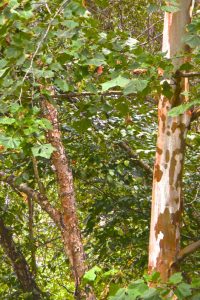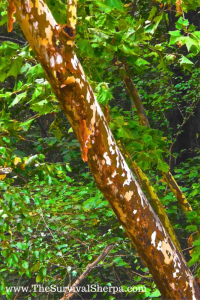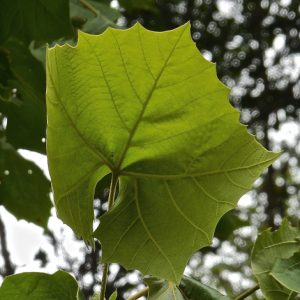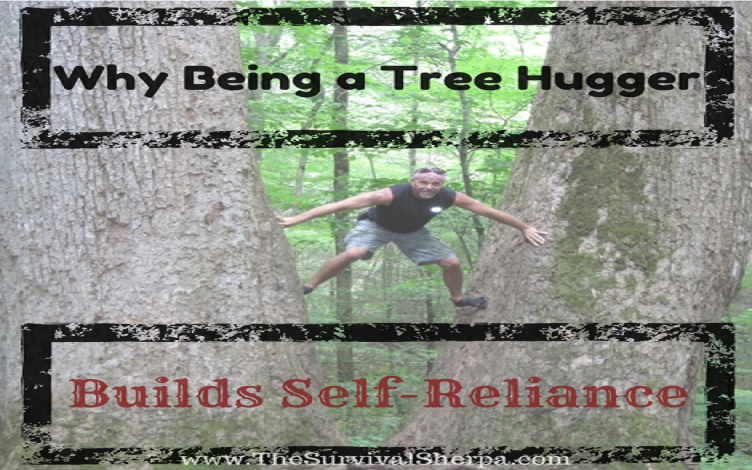Click Here To Join Our Telegram Channel for FREE daily tutorials!
I’ve never considered myself a “tree hugger” as defined in the Merriam-Webster dictionary:
noun: someone who is regarded as foolish or annoying because of being too concerned about protecting trees, animals, and other parts of the natural world from pollution and other threats [Emphasis mine]
Yesterday I annoyed a few motorists crossing a narrow country bridge on a tree hugger outing. Not intentionally, mind you. It’s just that I needed to photograph a beautiful American Sycamore stretching its molten limbs over a muddy Georgia river. One trucker let me know how foolish I looked by blaring his air horn as I perched on the bridge railing snapping my shutter. Unaffected, I continued my craziness.
The thought of being a tree hugger, as previously defined, may not describe you, but every person on the journey to self-reliance and preparedness would benefit from hugging a tree or two.
You’re conflicted, right? Well, don’t be.
It’s our responsibility to protect, use, and conserve our natural resources. We’re stewards of this land. Our Appalachian ancestors understood the properties of trees and how to use the wood, bark, leaves, and roots to build a sustainable life. There were no box stores with stacks of dimensional lumber to build a house. If a handle shattered, they knew the best wood to use for re-hafting an ax. Tulip Poplar was abundant and used to build houses and hand-hewn log cabins. The Appalachian pioneers knew their wood!
 A young sycamore growing near the roadside
A young sycamore growing near the roadside
A young sycamore growing near the roadside
There are boat-loads of info on edible weeds and medicinal plants. I’ve found a lack of printed material on the medicinal/edible uses of trees. I have many of the Foxfire book series and always look to add more to my self-reliance library. Clue me in if you have more tree resource books, please. So, like any good Doer of the Stuff, I’m embarking (pun intended) on a tree education journey as part of my Doing the Stuff Skills list. Who knows, maybe you’ll be convinced to embrace your inner tree hugger.
Ready, set, hug!
The first tree to wrap your arms around is the American Sycamore (Platanus occidentalis). It can reach heights over 130 tall, over 10 feet in diameter, and grow to be 600 years old. George Washington documented in his journal in 1770 a sycamore with a diameter of 14 feet (45 feet in circumference). Trees this large usually have hollow trunks that house animals of all sorts. It’s been reported that settlers even used hollowed Sycamore trees to shelter livestock.
The rapid growth rate of this deciduous tree causes the bark to shed in molten fashion like a birch tree. Its camouflage pattern of light green and brownish gray with creamy white background splotches causes the trunk to stand out in late fall and winter when forest leaves lay on the ground. The exfoliating bark and coloration make the sycamore one of the easiest deciduous trees in the eastern woodlands to identify in the winter.

The Sycamore and Self-Reliance
The fast growing American Sycamore likes wet bottomland near streams, rivers, and ponds in full sun. Their leaves are similar to maple but not as spectacular since they turn a boring brown in the fall. Beavers find the bark appetizing.
In Bushcraft
Bushcraft refers to the art of crafting in the bush (woods) with minimal tools and lots of skill.
• Sycamore’s fibers intertwine making it an excellent wood for spoon and bowl carving. The wood tends to warp in the drying process, so use dried, seasoned wood.
• Not rot resistant and shouldn’t be used for long-term structures exposed to the moisture.
• The sap offers a year-round source of hydration in warm climates.
• The sycamore can also be tapped like a maple tree for syrup or sugar. However, it takes a lot of sap to make small batches of sycamore syrup.
• Shade-casting crown of large trees offers shelter from the sun.
• Large leaves (up to 10 inches across) can be used as a wrap for slow cooked food over coals for an added sweet flavor.
 This green leaf measured almost 9 inches across
This green leaf measured almost 9 inches across
In Woodwork
• Sycamore is grown commercially for pulp and rough lumber.
• Interlocking grain makes nice accent pieces for woodworking.
• Turns easily on a lathe for bowls.
• Beautiful specking on gun stocks.
• Music boxes; guitars and violins.
• Hard to split which makes sycamore an excellent butcher’s block.
• Quartersawn makes this wood more stable for projects. Flat sawn tends to warp.
• It gets one of its nicknames “Buttonwood” from its ability to create durable wooden buttons.
• The wood is food safe and was used for food crates and barrels in the past.
In Medicine
Inner bark tea was used for a wide variety of treatments by Native Americans.
• Colds, coughs, and lung ailments
• Measles
• Emetic – cause vomiting
• Laxative
• Astringent properties to treat skin issues and eyewash
• Sweet sap on the inner bark used for wound dressing
• Sap can also be used to make wine
The American Sycamore is a pioneer species. About forty years ago, we stopped cultivating a small field on wet bottom land on our family farm. Today we have a large stand of native sycamores growing wild.
 What was once several acres of corn we pulled by hand
What was once several acres of corn we pulled by hand
Being a “tree hugger” should not carry a negative stereotype or denote a political affiliation for those of us building self-reliance skills and pursuing a more sustainable lifestyle. Embrace your love of trees and learn to be stewards of these towers of the forest!
Have you hugged a tree today?
Keep Doing the Stuff of Self-Reliance.
By Todd Walker
www.survivalsherpa.wordpress.com
This Crazy Off Grid Device Literally Makes Drinkable Water From Fresh Air:
According to NASA, the U.S. is expecting a 100-YEAR LONG MEGADROUGHT.
It's already begun. Ask the farmers in California. They know.
Every survivalist knows that water is of critical importance. You NEED an independent water source that you can count on!
As an interesting "survival rehearsal" - imagine that you turned the tap on right now and nothing came out. How long would you last?
But what if there was another water source literally hidden in plain sight. That's right, I'm talking about the atmosphere!
The amazing thing about getting water from the natural moisture in the air... is that it is ALWAYS available.
This gives you real water security!
Learn more about how to tap into "Nature's secret water reservoir" and stay hydrated when TSHTF!
Watch the video:
😳 What Tinnitus Does To Your Brain Cells (And How To Stop It)
After 47 years of studies and countless brain scans done on more than 2,400 tinnitus patients, scientists at the MIT Institute found that in a shocking 96% of cases, tinnitus was actually shrinking their brain cells.
As it turns out, tinnitus and brain health are strongly linked.
Even more interesting: The reason why top army officials are not deaf after decades of hearing machine guns, bombs going off and helicopter noises…
Is because they are using something called "the wire method", a simple protocol inspired by a classified surgery on deaf people from the 1950s...

I Can't Help Showing This Off:
If you haven't heard of Claude Davis yet do yourself a huge favor and watch this video.
One of the smartest guys I ever had the pleasure of meeting, Claude set-up a unique prepping system that changed his life forever.
I already tried it myself and let me tell... you I was completely blown away... His surprising tactics could make your life easier and give you the peace of mind you deserve.
Don't just take my word for it... watch his short video and decide for yourself.

Most People Don't Have The Guts To Try This:
An amazing discovery in an abandoned house in Austin, Texas: A lost book of amazing survival knowledge, believed to have been long vanished to history, has been found in a dusty drawer in the house which belonged to a guy named Claude Davis.
Remember... back in those days, there was no electricity... no refrigerators... no law enforcement... and certainly no grocery store or supermarkets... Some of these exceptional skills are hundreds of years of old and they were learned the hard way by the early pioneers.
>> Click here to find out about them now
We've lost to history so much survival knowledge that we've become clueless compared to what our great grandfathers did or built on a daily basis to sustain their families.
Neighbors said that for the last couple of years Claude has tried to unearth and learn the forgotten ways of our great-grandparents and claimed to have found a secret of gargantuan proportions. A secret that he is about to reveal together with 3 old teachings that will change everything you think you know about preparedness:
>>> Click Here To Watch His Short Video <<<

More Off-Grid And Survival Resources:

What REALLY Happens When You Bury a Shipping Container? (Hint: It's A Bit Crazy...)
Shipping containers are all the rage - but if you are thinking about buying one, you MUST watch this video first:
There's a general belief that if you bury a shipping container you can create an awesome root cellar / storm shelter / survival bunker.
But is a shipping container strong enough to handle the pressure?
Watch the video to see what happens:
What Really Happens When You Bury a Shipping Container? (Click To Watch Video)









